Among the many things we learned during our time in South Dakota is that the state capital is pronounced, more-or-less, PEER.
After leaving Badlands National Park, we made a straight shot to Ft. Pierre. Our stop there was the rise overlooking the Missouri where two French noblemen buried a plaque in 1743 claiming the land for King Louis XV. It is the earliest written record of the presence of Europeans in the area.
The plaque was discovered by a group of children in 1913.
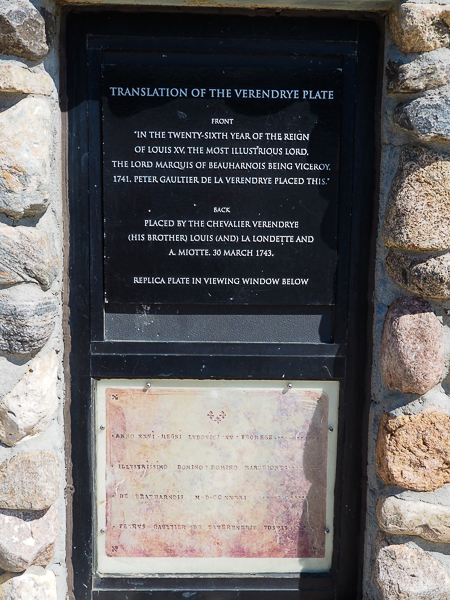
A full-size replica of the plaque with its translation is at the site.
Wikipedia provides a summary of the brothers' expedition and the controversies surrounding it. They may have gone as far as the Rocky Mountains -- or not. In any event the expedition was not followed up.
There may have been other plaques buried by the expedition, but if so, none have been found.
The young people who found the plaque, two girls and two boys, were simply horsing around when one tripped over a projecting edge of the plate.
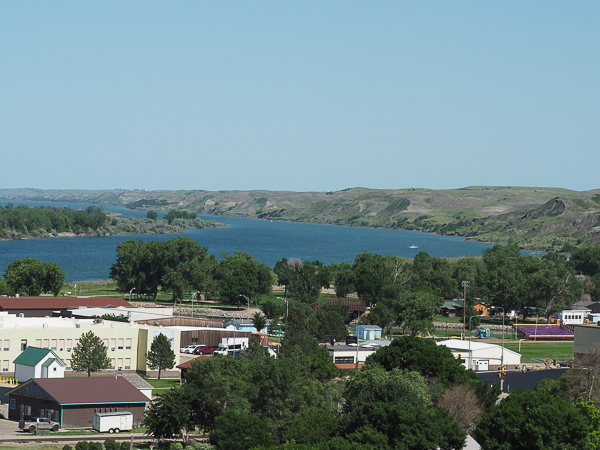
The Missouri River downstream from the rise where the plaque was discovered.
When we traveled down the Mississippi in 2022, the Missouri at its confluence with the Mississippi was a shadow of itself due to persistent drought. Although it looks healthy here, there was flooding downstream at the time of our visit.
Barely visible at the right of the image is the confluence of the Bad River with the Missouri. This was our first Lewis & Clark site. In 1804 the Corps of Discovery first met the Lakota, or Teton Sioux. The encounter did not go well, but hostilities were averted in the end so that the expedition could continue.
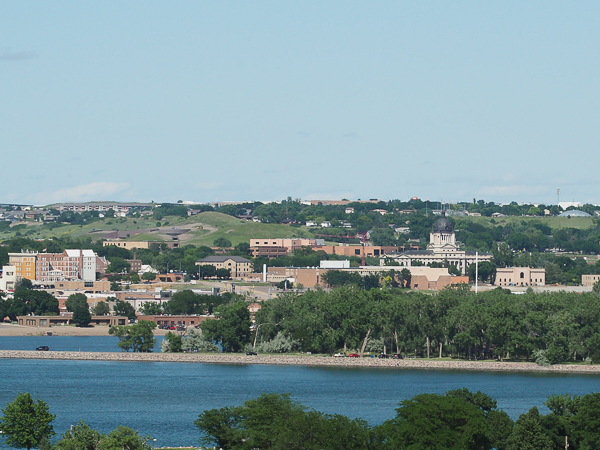
Pierre is on the opposite side of the river.
This overview show the state capitol, which we will visit, with its black dome to the right of the image.
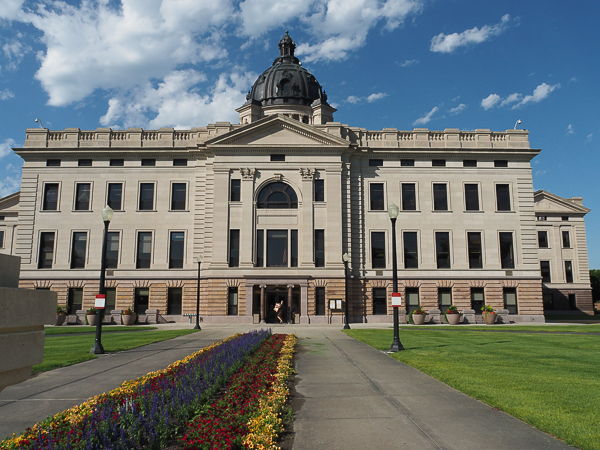
We got on the road early the following day for our visit to the capitol.
When Dakota Territory was organized in 1861, the capital first became Yankton, on the Missouri River, northwest of Sioux City. In 1883, the capital moved to Bismarck, in what is now North Dakota. In 1889 the territory was divided and North and South Dakota became states.
The selection of a city for the South Dakota capital became a struggle, replete with skulduggery, between candidate cities. Many cities vied for the honor (and its potential profits). There were three elections in total:
1889 (temporary capital): between Pierre and Huron. Pierre won.
1890 (permanent capital): between Pierre and Huron. Pierre won.
1904
(permanent capital): between Pierre and Mitchell. Pierre won.
Support for Pierre from the western part of the state was key.
After the city was chosen once and for all, there was need of an adequate building. The cornerstone of the current building was laid in 1908.
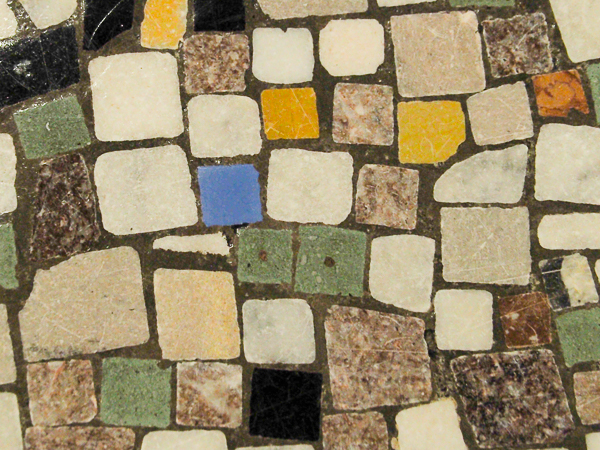
The floors of the capitol are terrazzo stones. Our guide told us that each of the workers laying tile had a single blue stone to serve as his "signature." The stones may be found throughout the building.
In the mid-1980s workmen repaired cracks in the terrazzo floor caused by settling. Those workmen used heart-shaped stones to mark their work. I didn't get any pictures of those.

The interior stained glass dome is separate from the exterior copper dome.
I have seen pictures of lighting behind the stained glass, but it was not lighted while we were visiting.
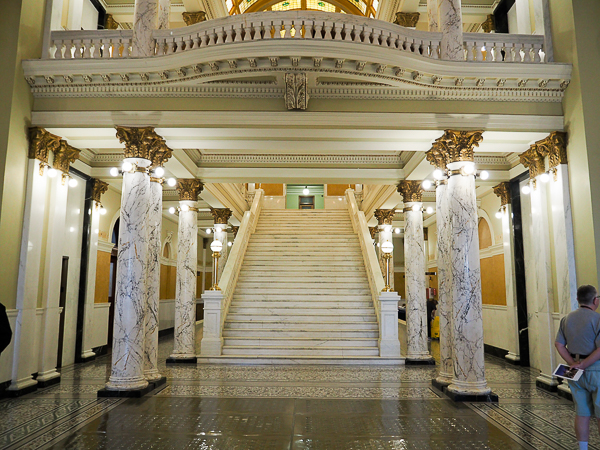
The grand staircase from the rotunda to the upper floor.
The columns are not marble. They illustrate a technique called Scagliola.
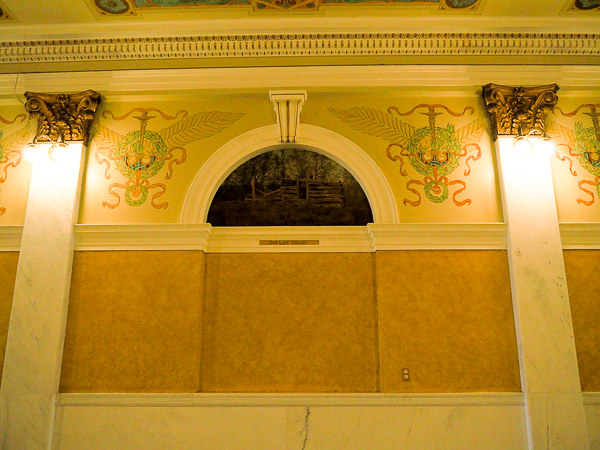
Over the years, the need for new offices, space for heating ducts, and electrical and communications cabling prompted installation of new walls, dropped ceilings, and the like. Many decorative sections were simply covered with white paint.
Beginning in the 1970s restoration projects returned much of the building to its former glory.
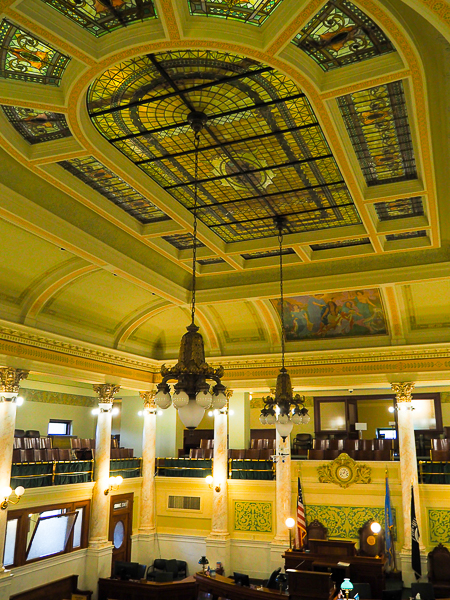
The stained glass ceiling of the senate chamber is backlit to show it off. Other features of this room have been restored to their original grandeur.
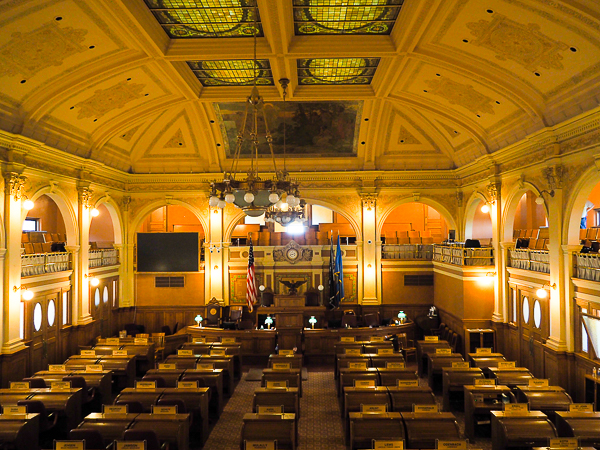
The House of Representatives chamber.
We were unable to visit the Supreme Court chamber.
After our tour of the capitol, we were back on the bus for a visit to the Oahe Dam north of the city.
Click your "back" button to return to the previous page or click for our picture album.